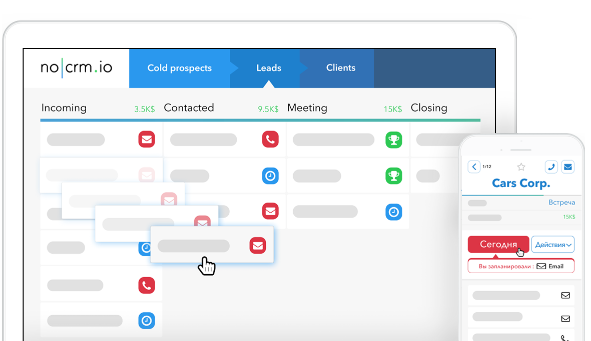Learn how to optimize your sales process, making it fundamental to your organization’s sales setup.
At its core, sales is about having a process. It’s a system of refined steps allowing you to change, tweak and improve the architecture behind your methods. The best sales teams are the ones that have a sales process.
Without one, you’re on a one-way street to dysfunction, relying solely on sales reps to produce the goods. That might work if you have a team full of Don Drapers–and sure, every company has that one natural sales person–but in reality, you need to optimize the sales process so it can become your star seller. Not the individual.

Here’s how you can optimize your sales process and maximize revenue.
What Defines a Sales Process, And How is it Measured?
It all starts with an inquiry, which you should respond to as soon as possible—and certainly no longer than 24 hours. Now comes the important part: Qualifying their needs to see if they are the right person for the product. Ask about budget and whether there is a timeline for buying. If all sounds good, drop them an email with a presentation of products within 48 hours.
But here’s where things get interesting–it’s time to follow up with a phone call within the next two days so you can live demo products. Once you have a meeting scheduled, it’s time to meet in person. Make a proposal during the appointment, and if all goes well, shortly after you will close the deal.
Optimize Your Sales Process And Pipe Up for your Pipeline
Having a process defined by your pipeline is an important way to help salespeople focus. You can even provide marketing materials during each step to help them. A planed pipeline let you onboard new sales and track the performance of your process and team. By identifying where the problems are in the process, you will be better placed to support your staff.
The chances are that you’re already using some form of a pipeline to guide and manage your sales team. It is, after all, at the heart of your process. An easy-to-understand pipeline is central to cohesion amongst your staff and increasing their productivity.
A pipeline provides clarity: The whole team can use it, and everyone knows where they stand with leads. You can track the progress of your prospects, which tend to decrease the further into the cycle you go. What you’re left with is only serious leads.
The key point of a pipeline is that it provides a next step, which is vital for converting. There is no second-guessing, not being sure what comes next, or getting lost in a myriad of leads. You always have complete transparency over what the next part of the process is.
Having a sales process (and good software to manage it) helps you see which leads are most likely to close with clear visibility. You can also look deeper into your pipeline for long-term strategies.
Crystal Clear Sales Process

The length of a pipeline is key for optimizing your sales process. Too few stages, and the cycle is too fast. This leaves salespeople feeling a sense of urgency and confusion, which can coerce them to pressurize the customer into making a decision. If this happens, it only ends up adding to the ‘pushy’ stereotype some reps have.
Having too many steps, however, can be time-consuming and difficult to manage, which leads to missed opportunities. It’s also a good idea to name each action so it’s easy to follow and you can see which stage the prospect has reached.
Think of your pipeline driving the sales process as the same way an engine powers a car. The bodywork might look great, the 20-inch rims are shining, and the sound system has lots of base, but none of that matters if the engine doesn’t work. You’re left with all looks and no substance.
One Step at a Time
A pipeline doesn’t solely work for providing a next step; it also helps with business analysis. As you become more familiar with your pipeline, you’re going to notice which aspects are working and which ones aren’t.
Being able to pinpoint where most of your leads – and in which categories – are falling away means you can refine your approach and improve sales tactics.
Let’s say most of your leads drop out after the first phone conversation with a rep. Maybe the quality is not good enough and you have to correct something in the marketing approach.

Or perhaps your reps are not convincing enough and you need to change your value proposition or the way your rep presents it. By focussing on pain points, you can find what is happening and rectify it.
Having a pipeline and metrics allow you also to test different configurations. If you find a big difference between sales people at different moments of your process, the answer might be to split your team up into ‘qualifying’ and ‘closing’. This gives you the opportunity to focus on your team’s strong points and maximise your sales.
All of these potential issues are much easier to identify if you have a solid process that lets you look at every aspect of the pipeline.
Keep it Real

It can be tempting to create a large pipeline so you can move lots of prospects through the different stages. It makes it look like you’re being productive and making things happen. But in doing so, you’re only jumbling the process with prospects that don’t amount to much.
The feeling of moving prospects through the pipeline might be a good one. Initial delight will be short lived when there is no conversion at the end, however.
Instead, go by the ‘less is more’ theory and concentrate on prospects that are more likely to convert. Be sure that there is a genuine chance to win the deal. The whole point of having a process is so that you can remove the clutter and streamline your pipeline, leaving only quality leads.
Qualify for the Next Round
One way to make sure that you optimize your sales process and it gets off to a smooth start is by having a pre-qualifying process for prospects. It might sound straightforward, but many businesses’ sales reps are so keen to chase leads, they will enter any Tome, Dick or Harry into the pipeline.
When you decide on an unqualified prospect, be sure to profile them. Is the person that you’re talking to a decision maker? If not, how easily can they put you in touch with someone capable of making business decisions?
What is the budget like for the company you are targeting? Can they realistically afford what you are selling? There is no point going through the time and effort to convert a sale if the targeted person/company didn’t fit the profile in the first place.
Get Better Equipped

Sales managers and CEO’s need to look at software that focuses on helping salespeople manage their pipeline, while helping them to achieve their goals. The focus should be to optimize your sales process. And that process needs to be easily accessible and straightforward to boost sales and increase profits.
Having a pipeline that easily allows you to manage your process with complete clarity will only aid your sales reps. While many companies use a CRM or rely on their excel sheets, these processes don’t offer clear pictures for moving leads along the pipeline.
An Excel sheet might work for a few leads, but as the business grows, it’s not designed to manage increased interest, and eventually runs it course. CRMs also fall short when it comes to a straightforward pipeline. Too often, reps need to input unnecessary data, complicating the process while delaying the part where you get to the pipeline.


